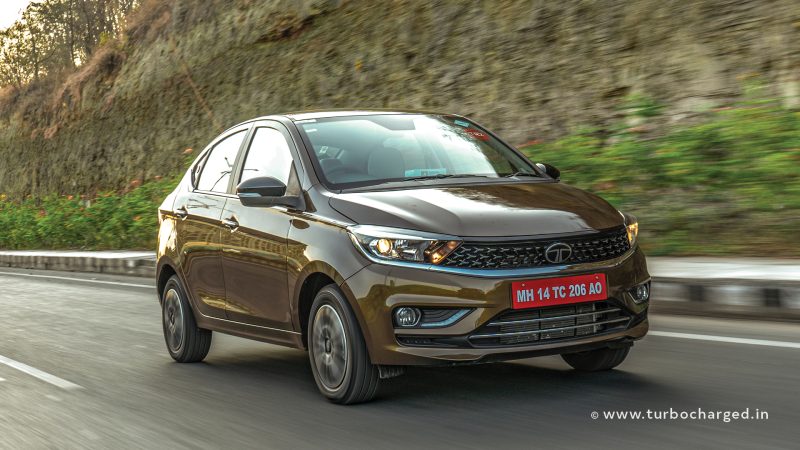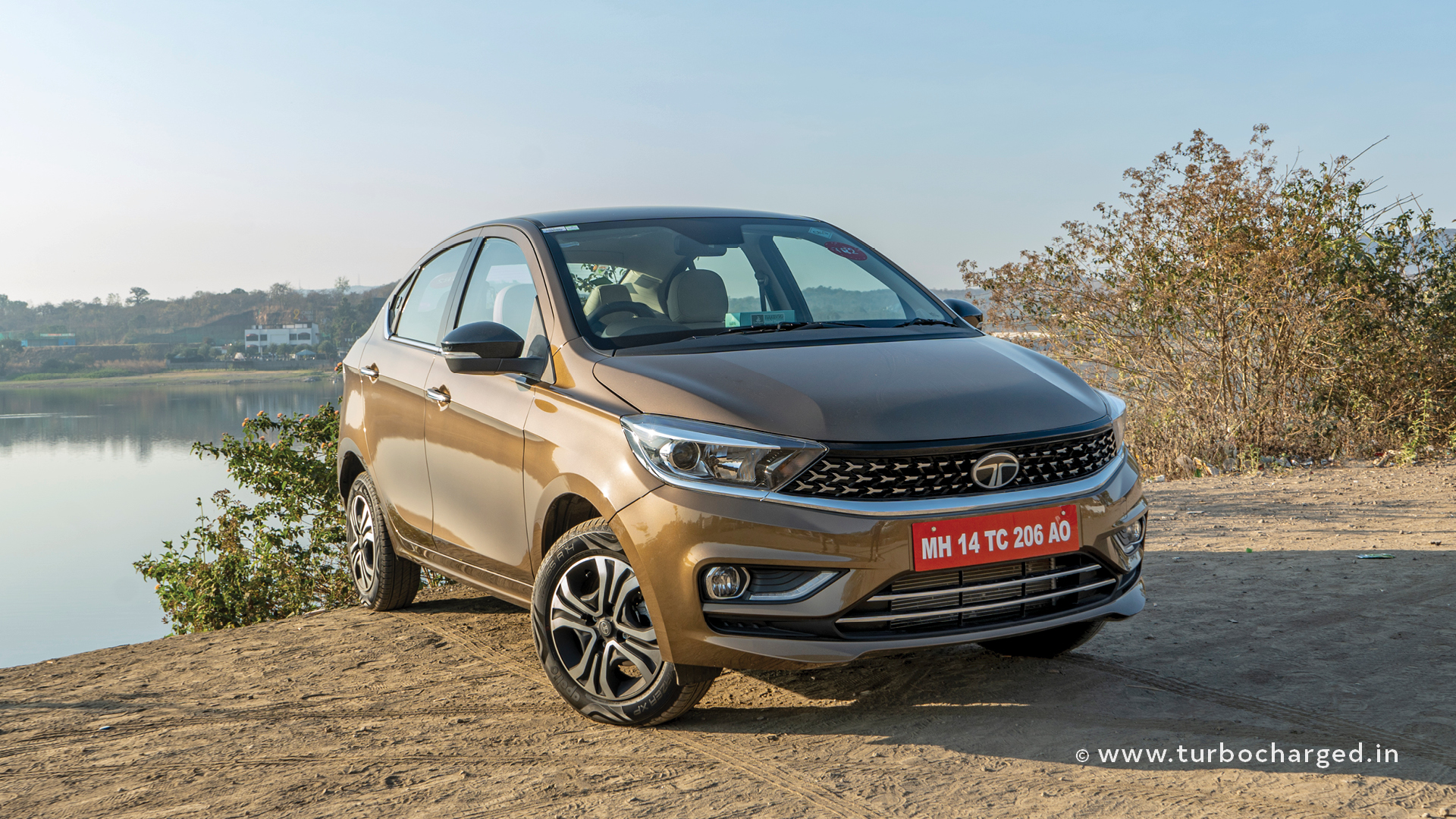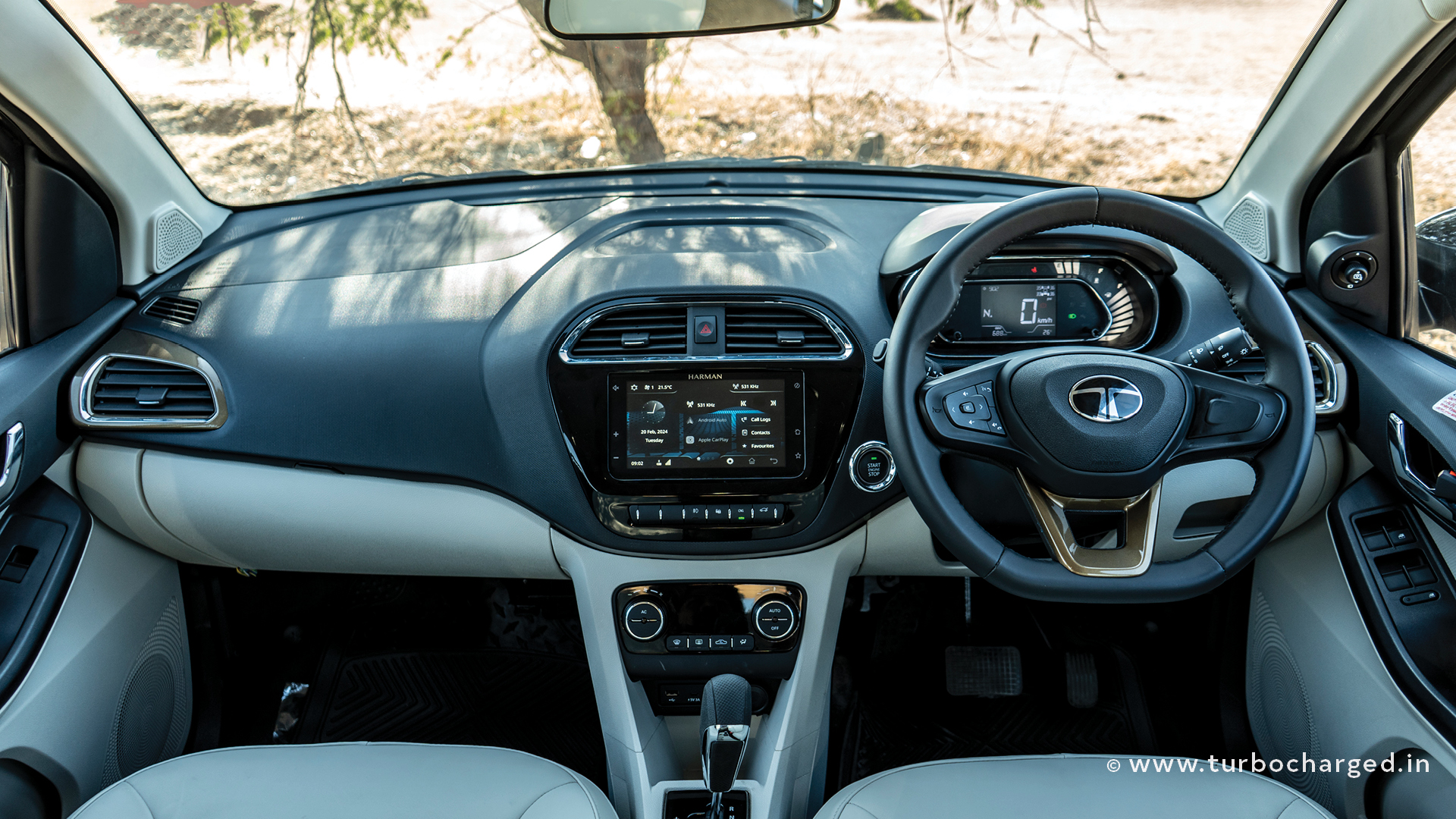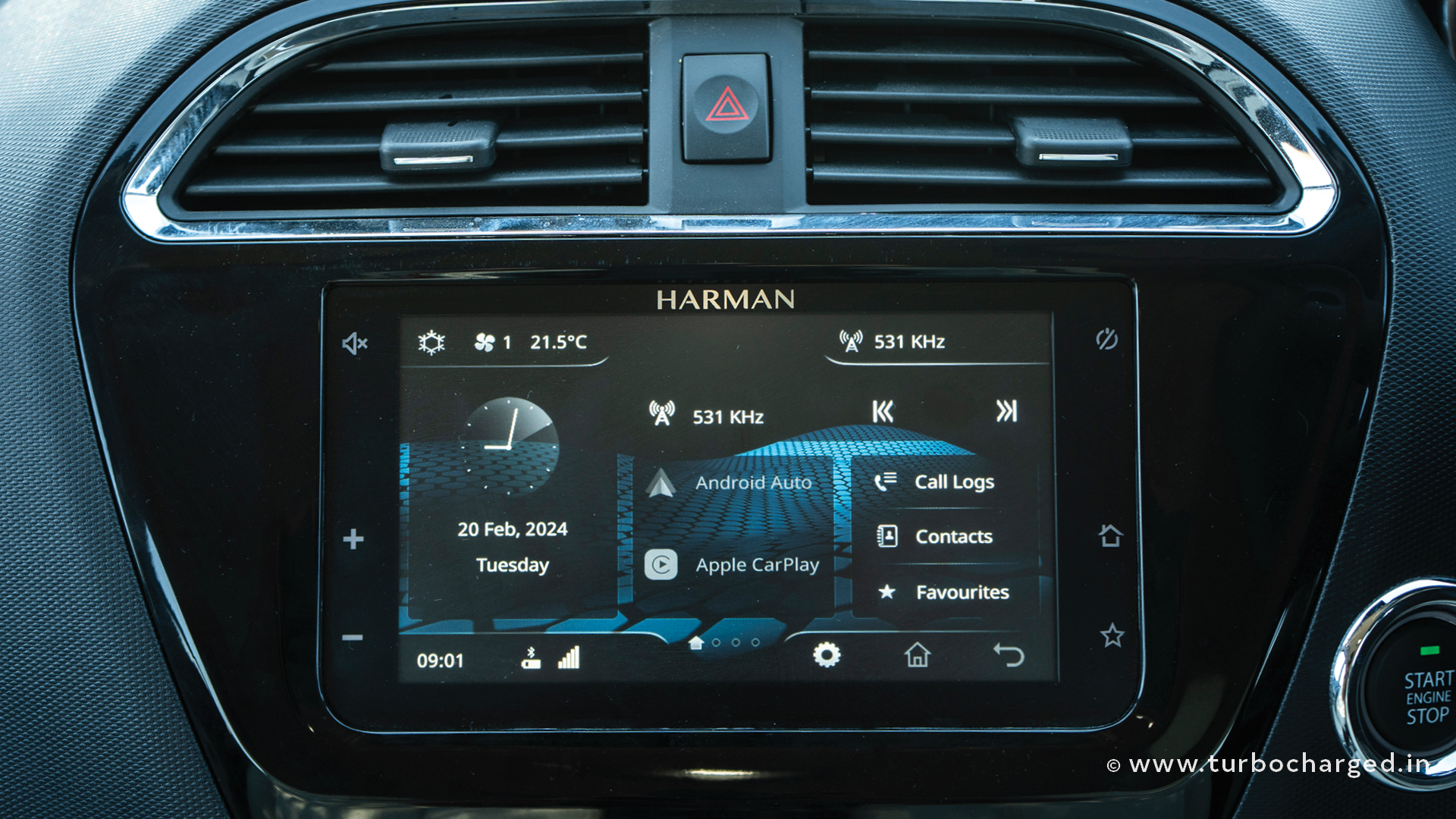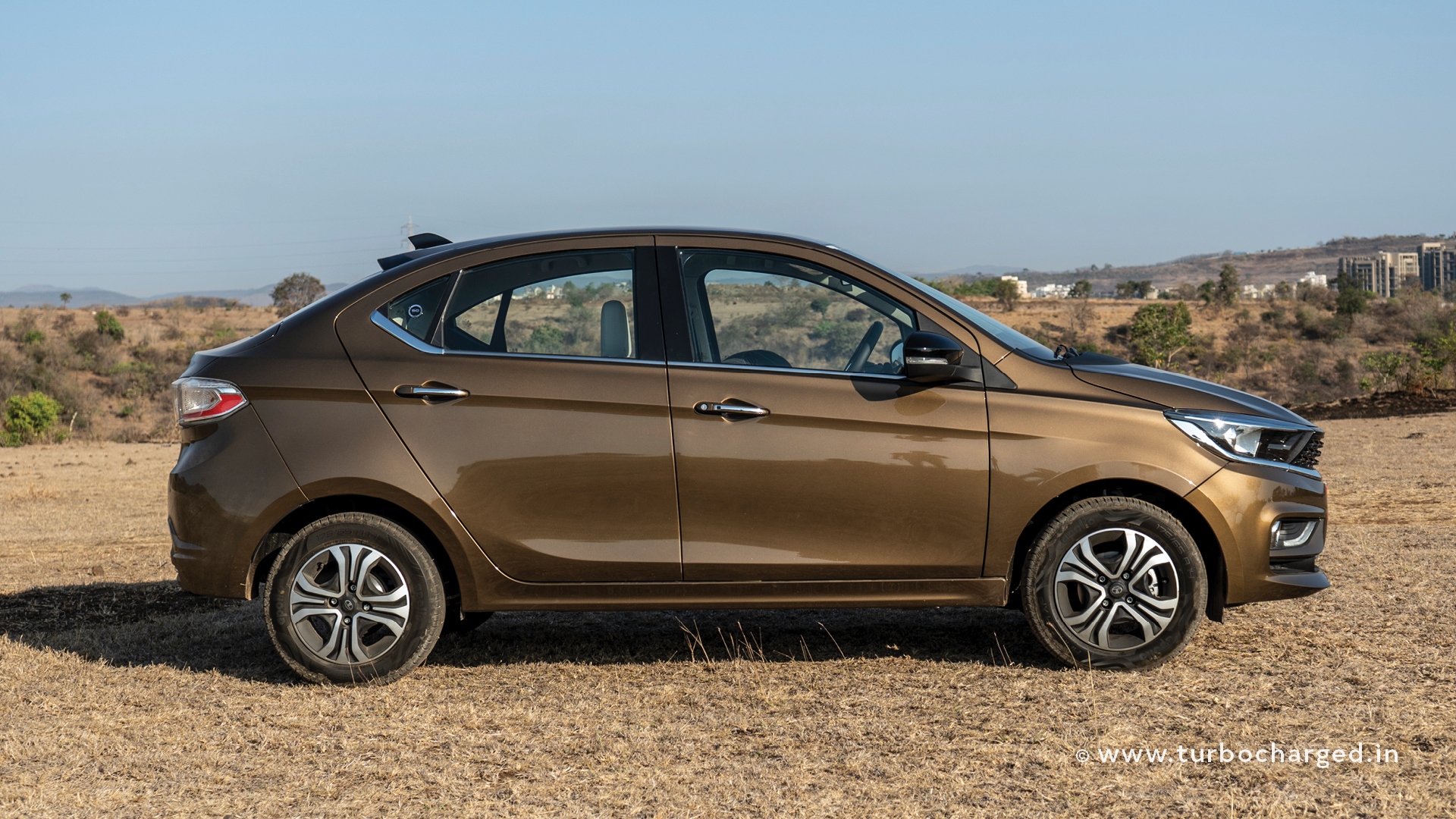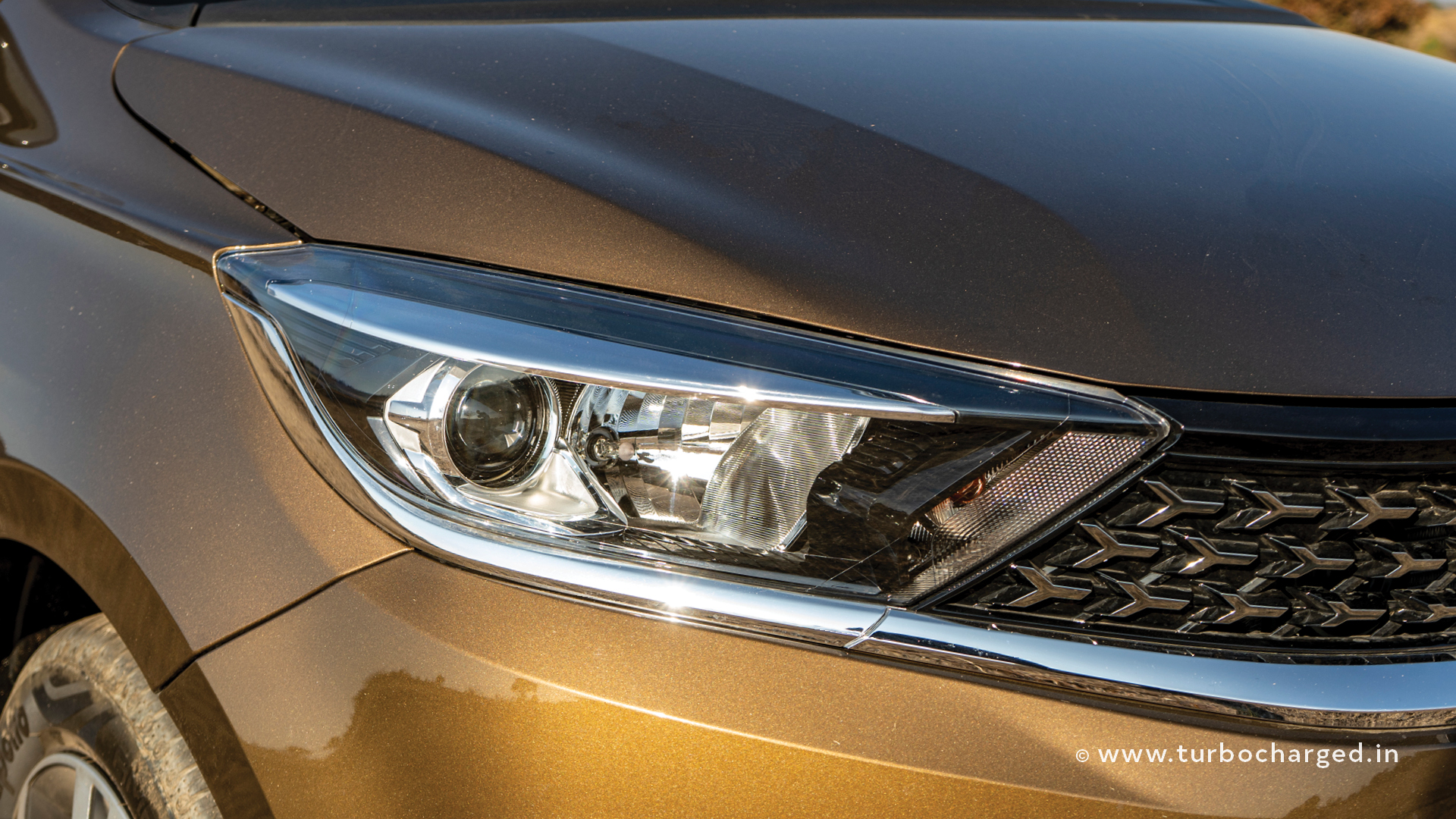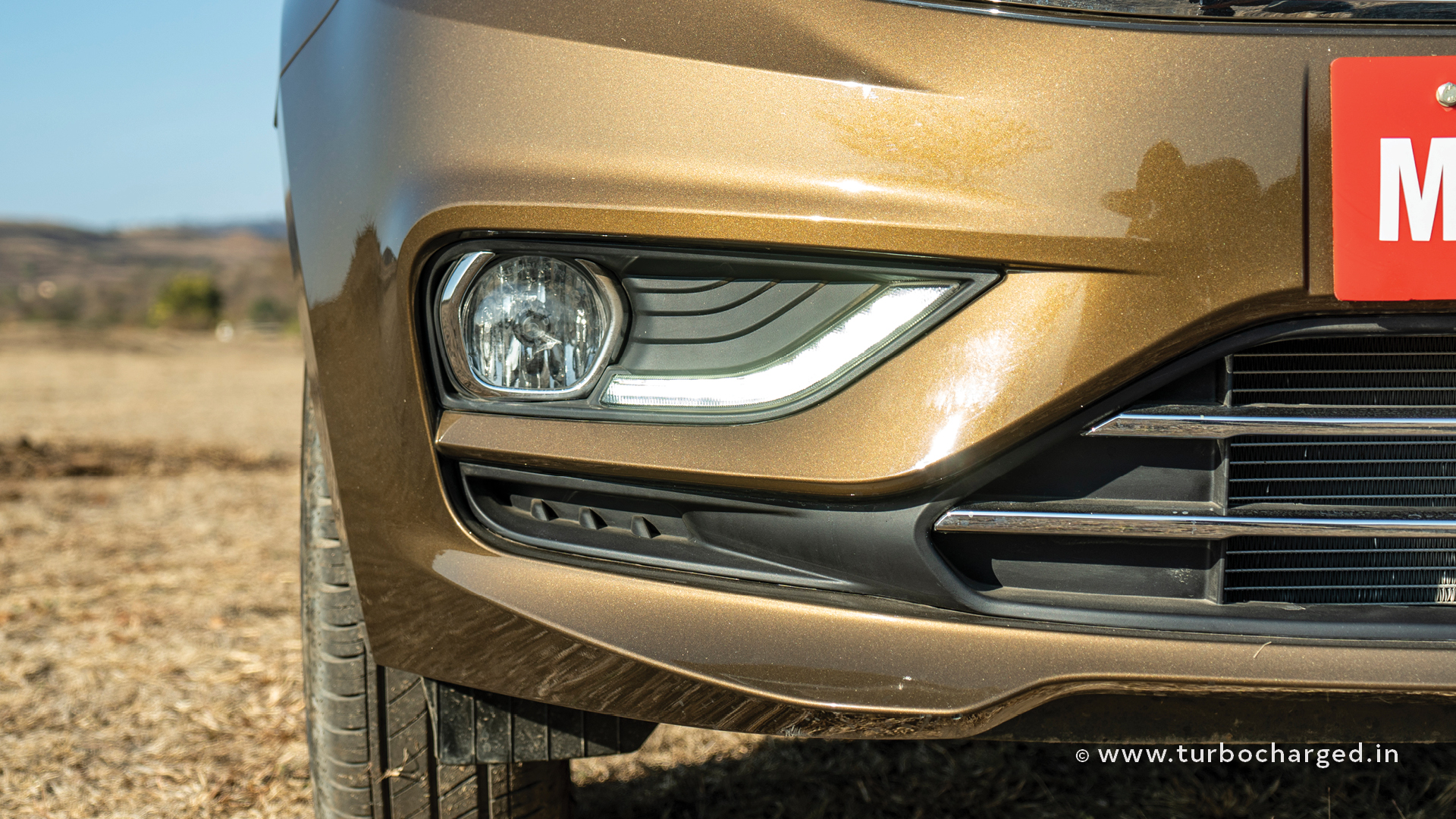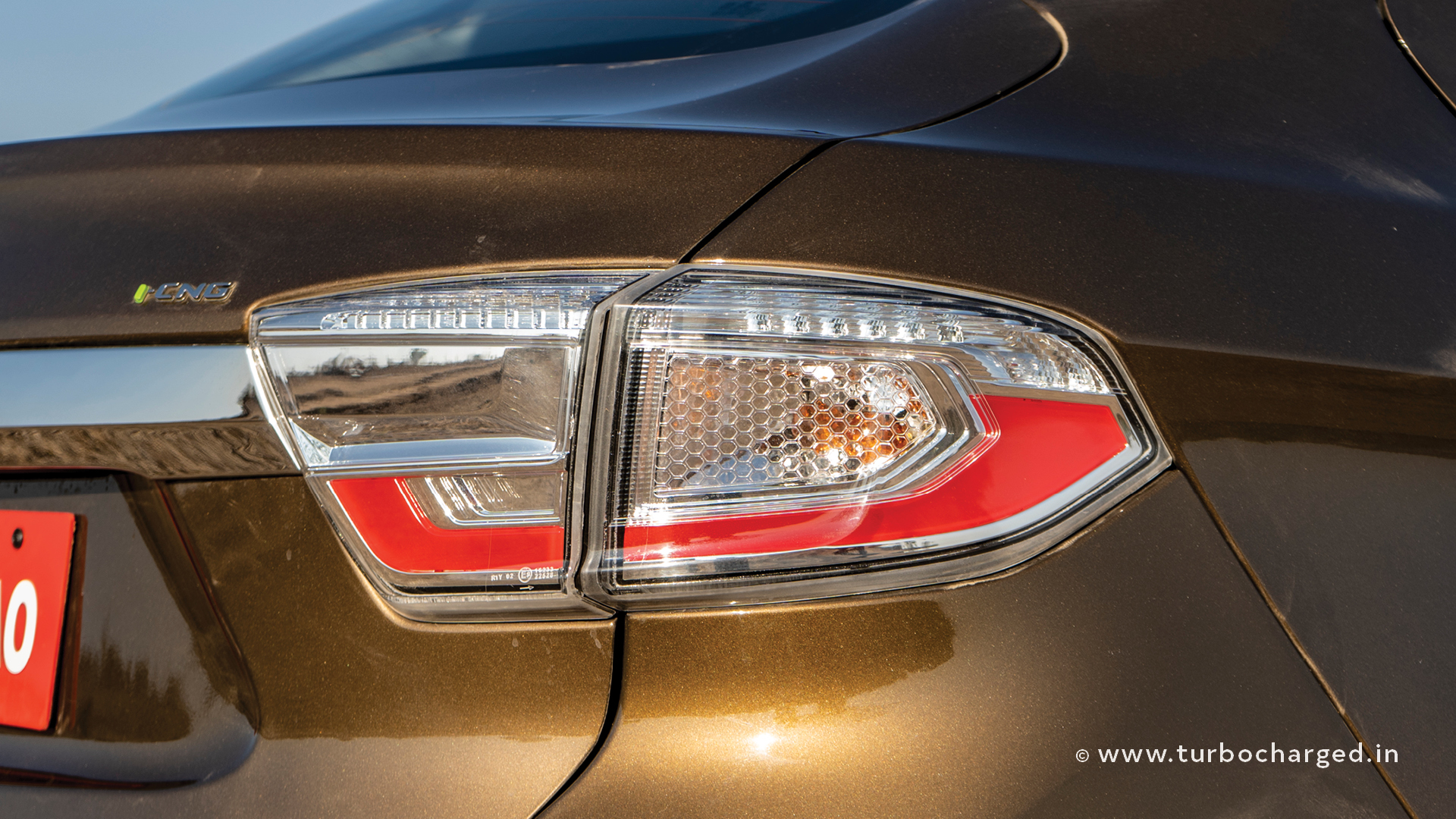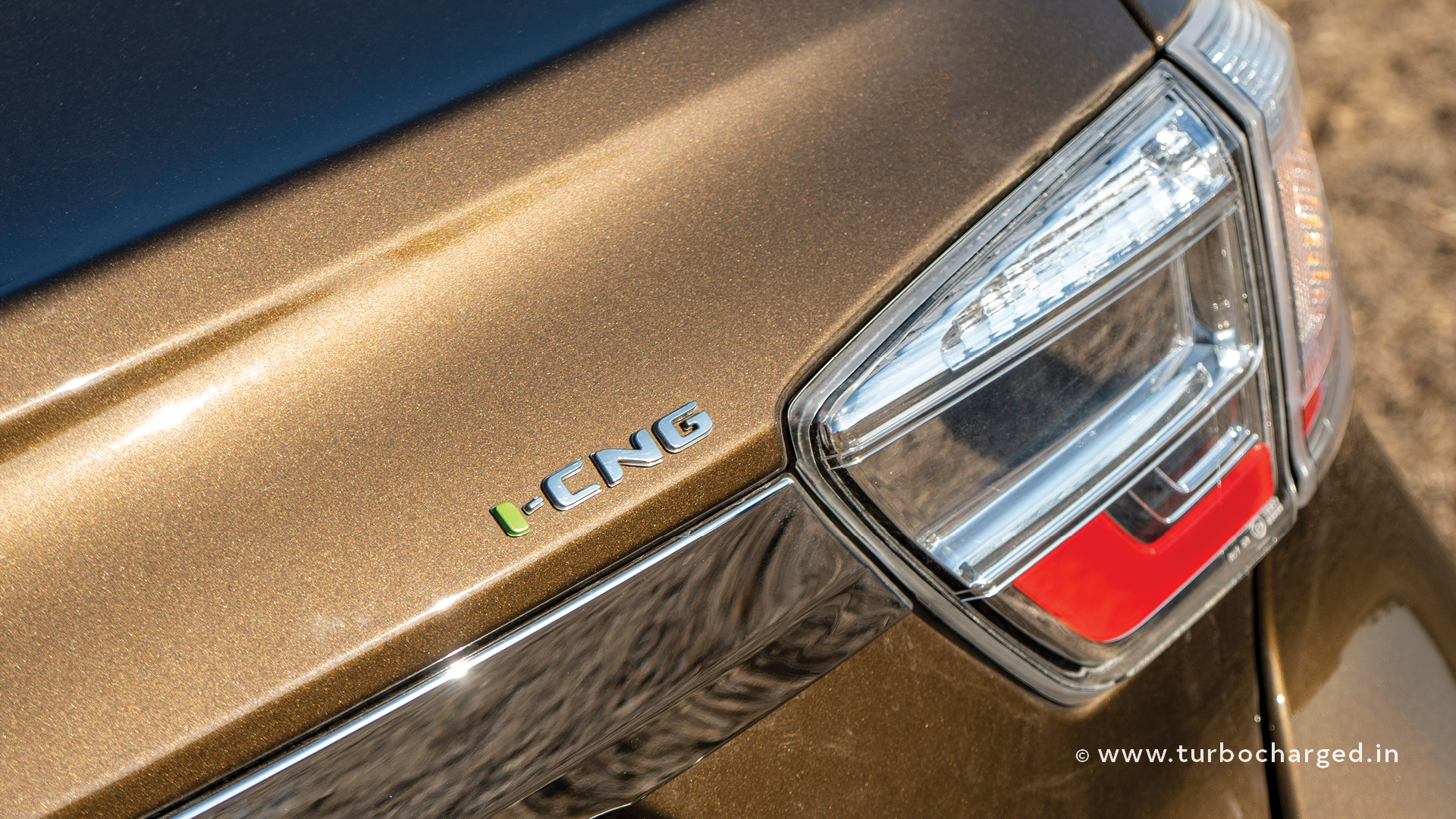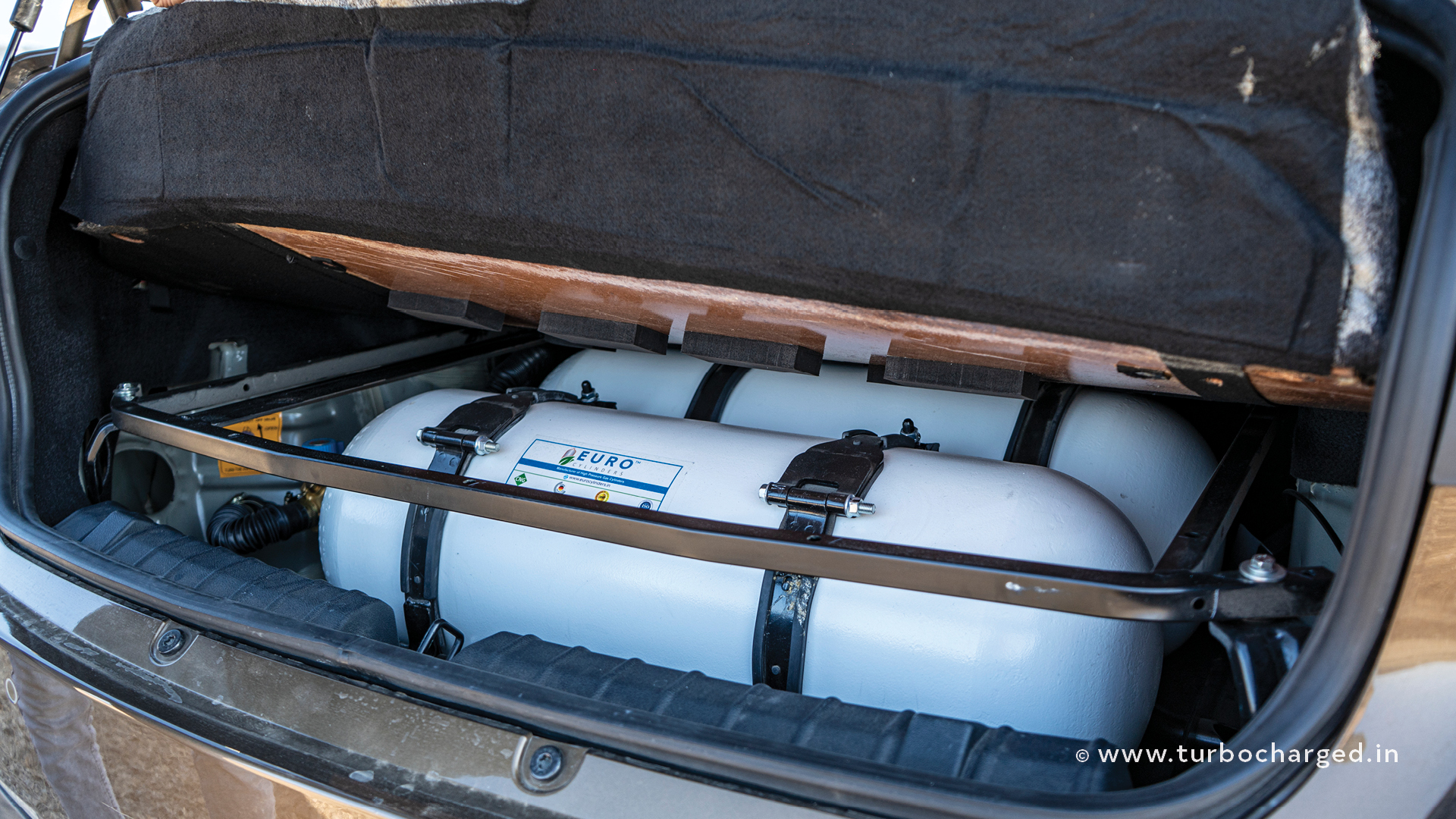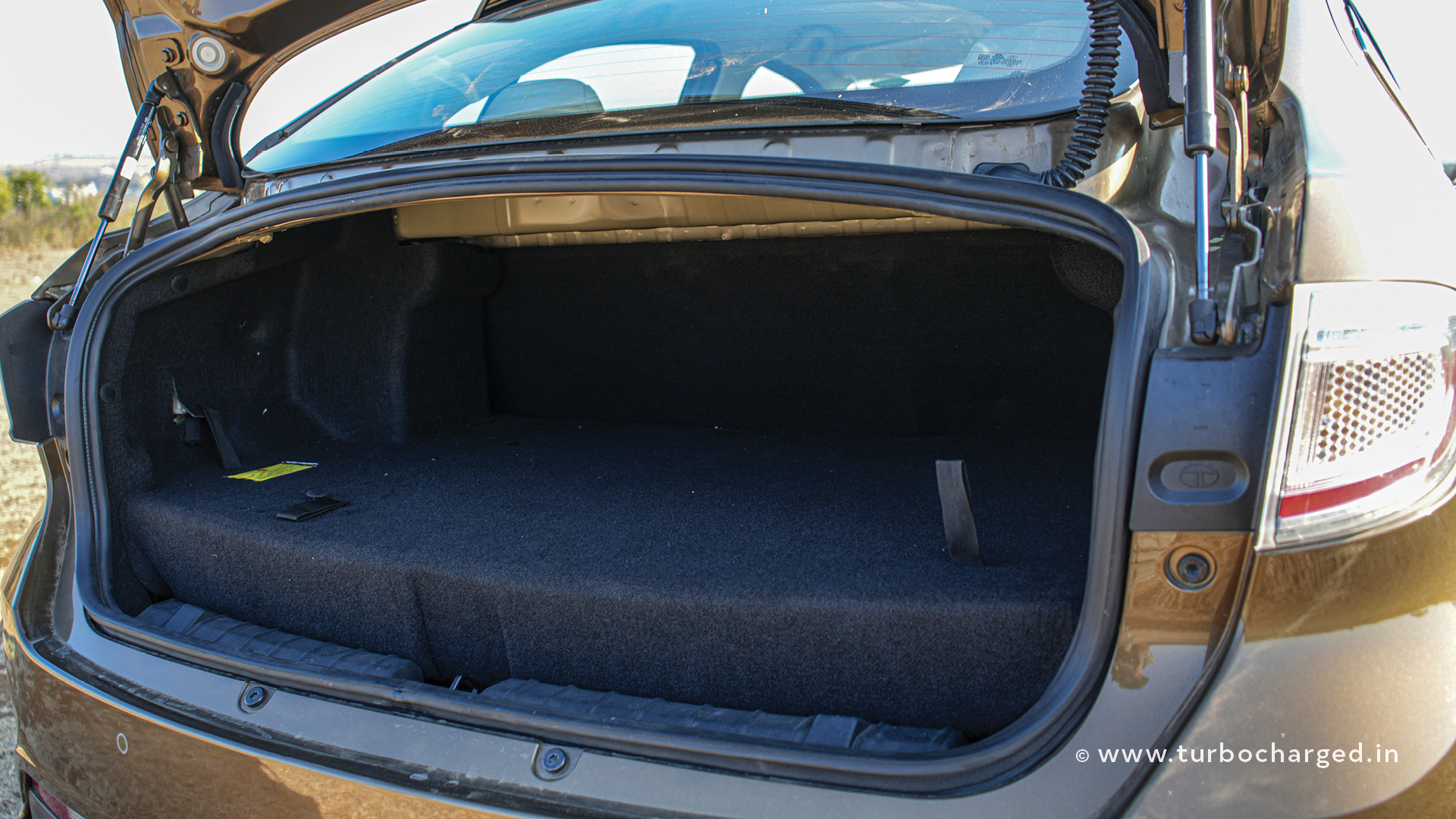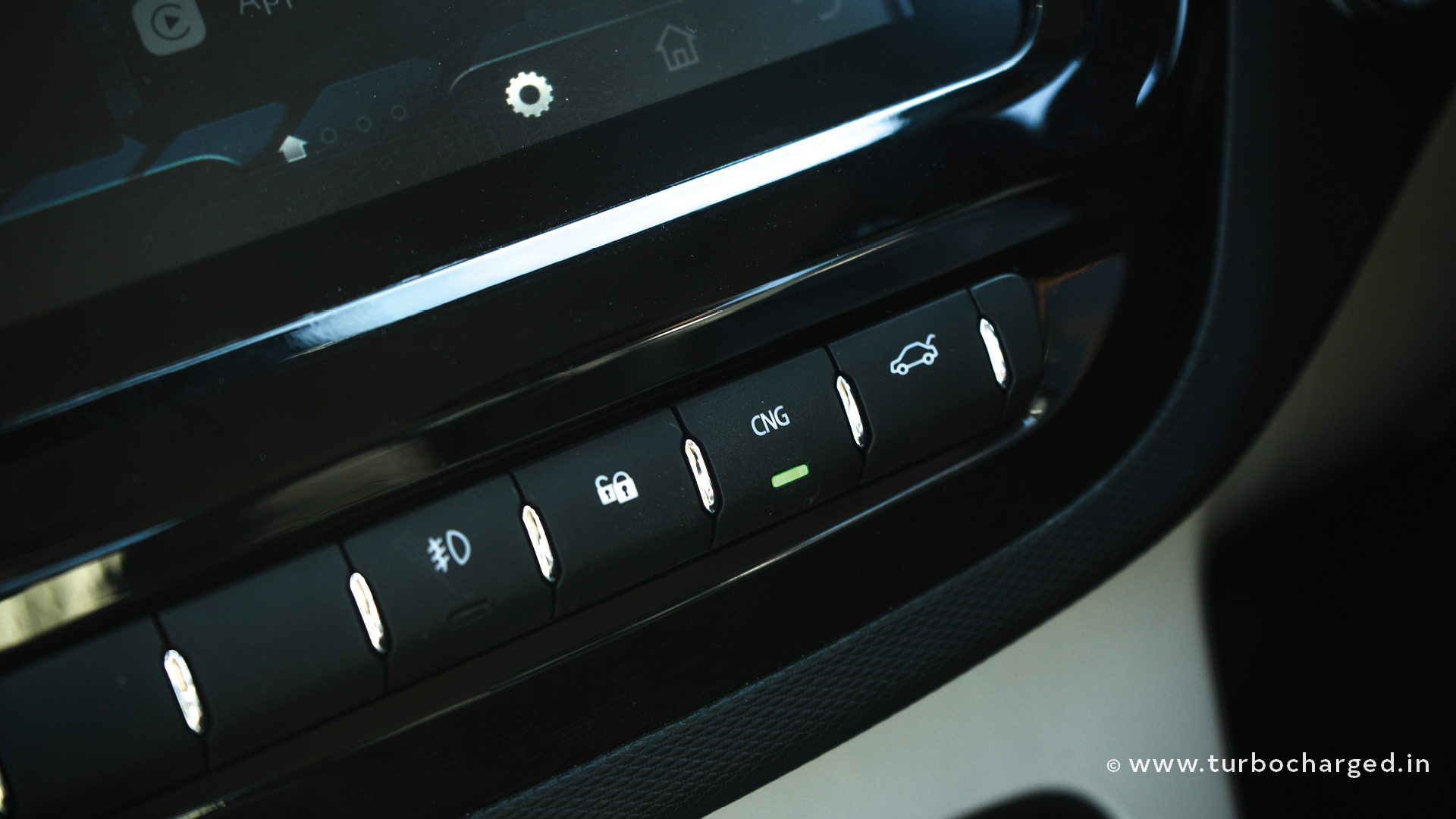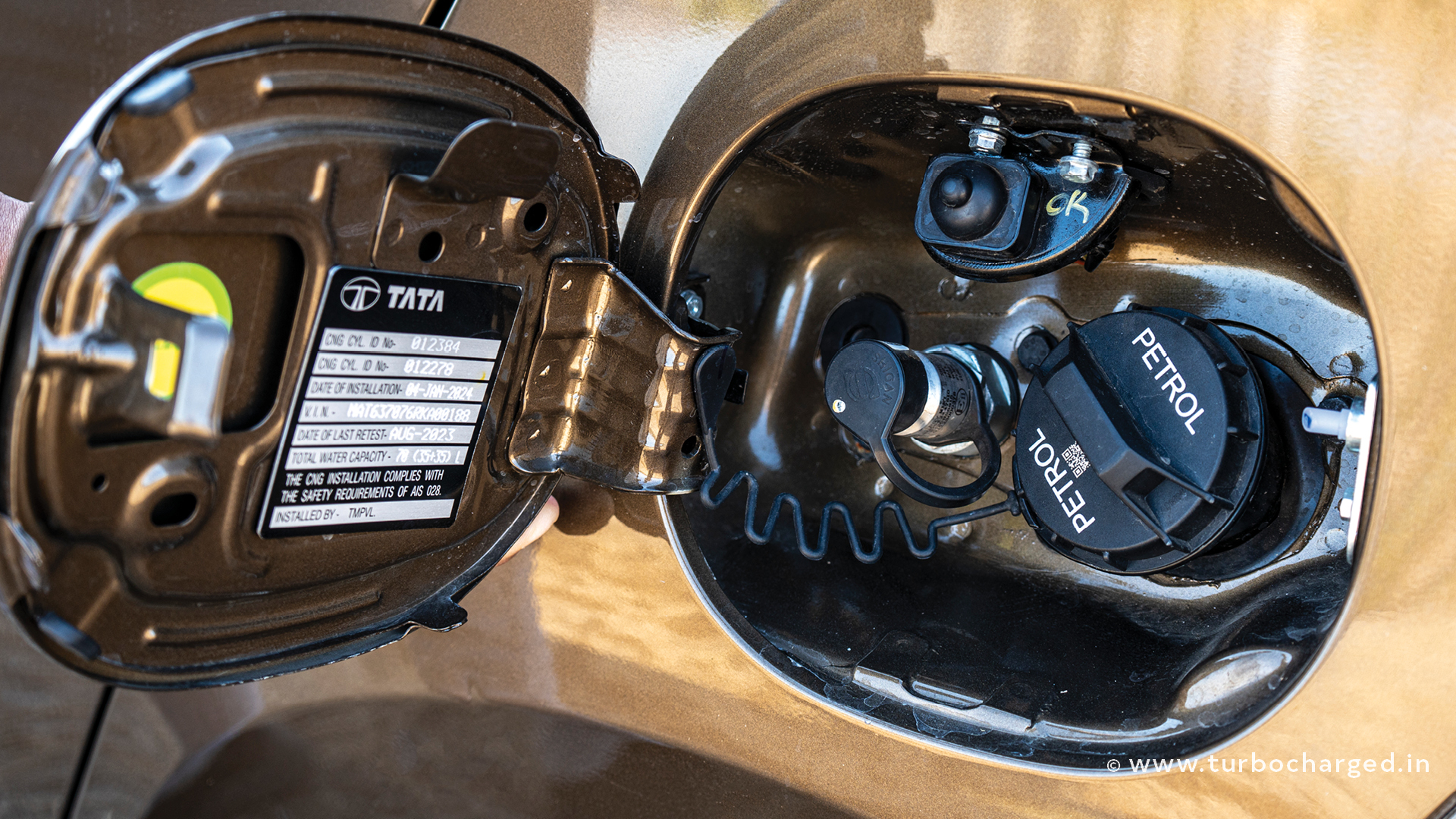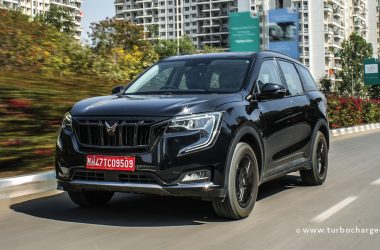Over the past few years, the Indian automotive landscape has witnessed a notable transition, with an increasing number of private individuals opting for CNG cars as their preferred mode of transportation. This shift is largely driven by a collective desire to seek out cost-saving benefits of this most affordable fuel.
Tata has been a strong force in this segment with multiple vehicles in its portfolio offering a CNG variant. More importantly, the carmaker has taken conscious steps to tackle the prominent concerns faced by CNG vehicle users, particularly the trade-off between boot space and the absence of automatic transmission. The first issue has been ingeniously addressed through its Twin-Cylinder technology, initially unveiled at the 2023 Auto Expo and made its way into the Tata Tigor CNG, last year which is the manual transmission variant. The Tigor iCNG too makes use of this setup but more importantly, brings in an automatic gearbox version in the mix, making it the first CNG sedan in the country to do so.
There isn’t any cosmetic difference between the standard Tigor CNG and its iCNG variant, save for the addition of a new colour option – Meteor Bronze and looks good in combination with the chrome all around. The interiors too remain unchanged and get features like leatherette seats, a 7-inch Harman infotainment screen compatible with Android Auto and Apple CarPlay, a digitised driver’s display, rain-sensing wipers, push-button start, automatic headlamps, and steering-mounted controls.
Tata’s unique approach involves placing two cylinders positioned laterally in the boot as seen on the manual variant, instead of the conventional method of placing one large CNG tank. This move offers better space utilisation and liberates additional boot capacity. Although the boot space numbers haven’t been disclosed, the Tigor iCNG AMT comfortably accommodates two cabin bags along with miscellaneous items. The twin CNG cylinders have a combined water capacity of 70 litres which is the same as the manual variant. Moreover, the system boasts a leak detection mechanism, transitioning between CNG and petrol modes as needed. Noteworthy safety features include a micro switch that automatically shuts off the vehicle when the fuel filler flap is opened, ensuring added peace of mind. Also, in the event of a thermal incident, a specialised nozzle facilitates the safe release of CNG into the atmosphere.
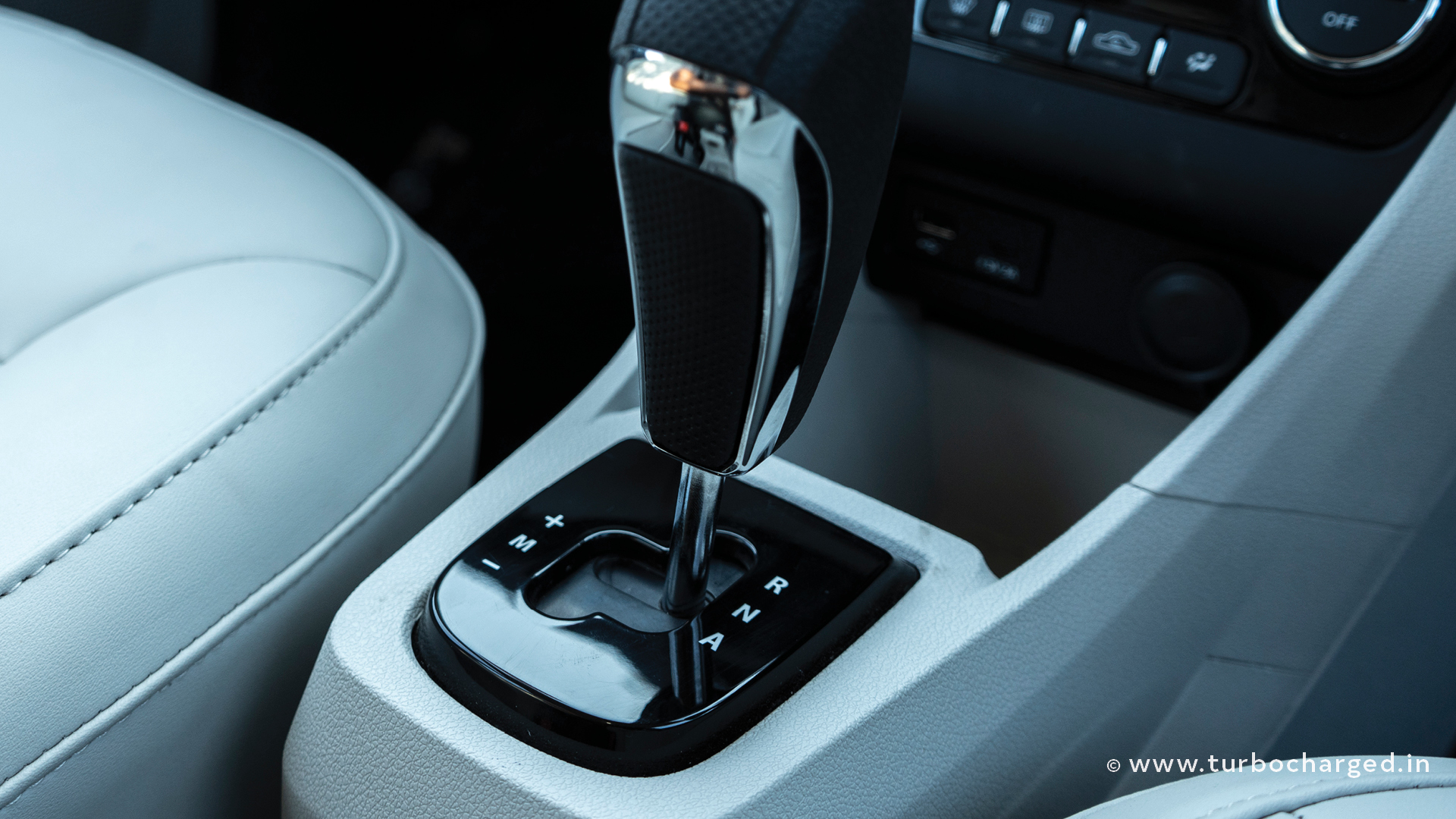
The gearbox in question is a 5-speed AMT paired with a 1.2-litre petrol engine. While the petrol powertrain produces 86PS and 113Nm, in CNG mode, it delivers 73.4PS and 95Nm. Despite a slight dip in the power figures on paper when comparing the Petrol and CNG modes, there isn’t a significant difference on the road. The CNG mode offers adequate performance in the city while delivering acceptable NVH levels. The powertrain is smooth to redline with little to no vibrations. There is a thrum that you typically get from a 3-cylinder engine when you mash the throttle in both petrol and CNG modes. Switching between the two modes is as easy as pressing a button on the centre console and works seamlessly.
The AMT gearbox is impressive. While the shifts aren’t as quick as other gearboxes, it is quite smooth for an AMT. It also has a dedicated manual mode which can be used via the gear lever. In manual mode, the shifts take a tad bit longer but isn’t a deal-breaker considering you will be primarily using it for urban commutes. It is intuitive and will downshift even at triple-digit speeds when you floor it. It has a creep function allowing for speeds of upto 7kmph without throttle assist. However, it isn’t well attuned for inclines as the car starts rolling back. The lack of hill hold assist too is a bummer.
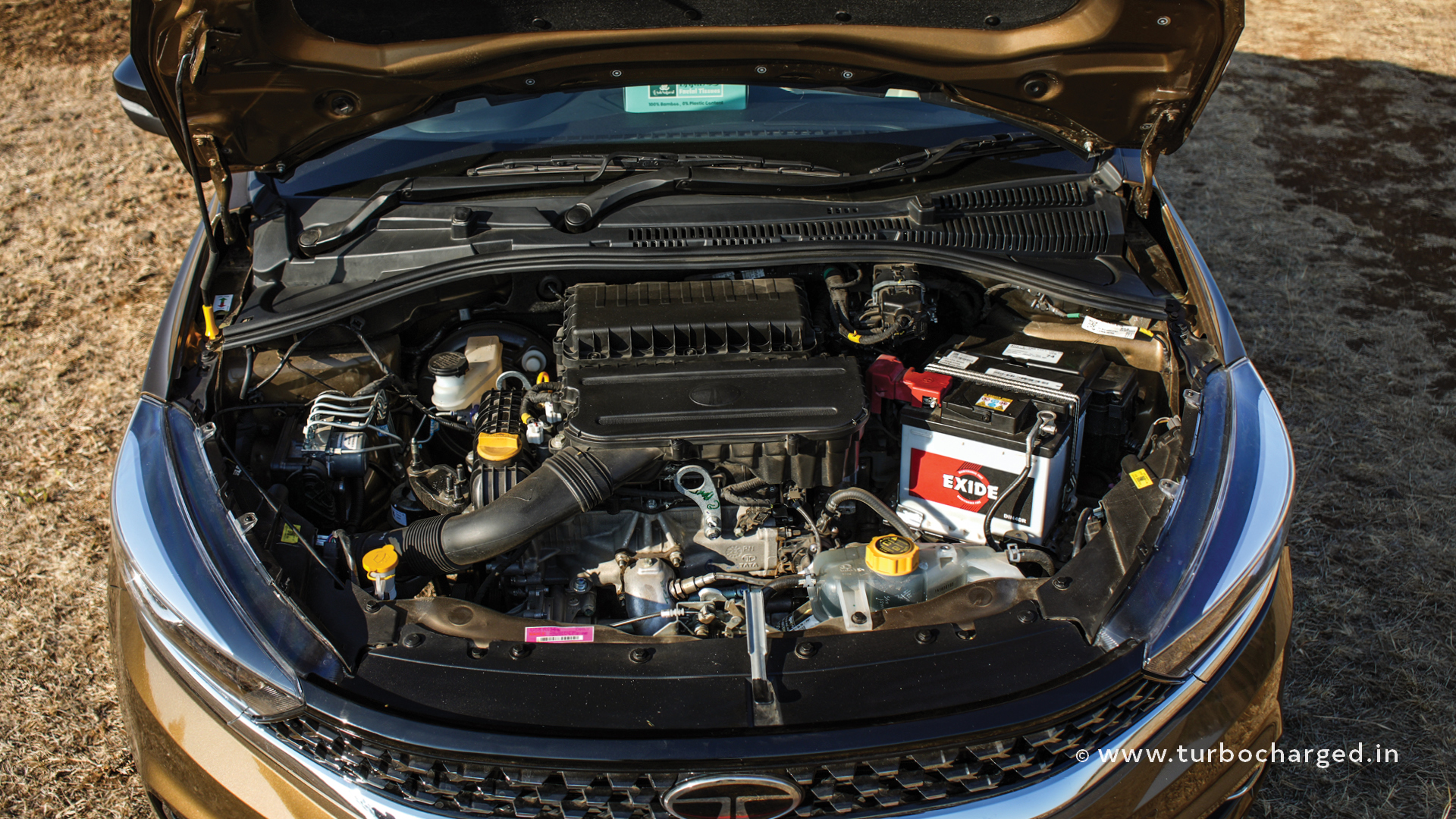
The extra weight of CNG cylinders in the boot led Tata to retune the rear suspension, which helps maintain ground clearance at 165mm, still 5mm less than the petrol variant. While the front tends to bounce, the rear remains compliant and composed when tackling potholes and speed breakers. The suspension tuning hasn’t significantly altered the driving dynamics, with the car still tuned to understeer in corners. The steering feels light, especially beneficial in city conditions, and does not weigh up at higher speeds. Stopping power is good, with discs at the front and drum brakes at the rear; the pedal offers a good amount of bite and decent travel. Overall the ride and handling is something that is expected in the car and best suited for urban conditions.
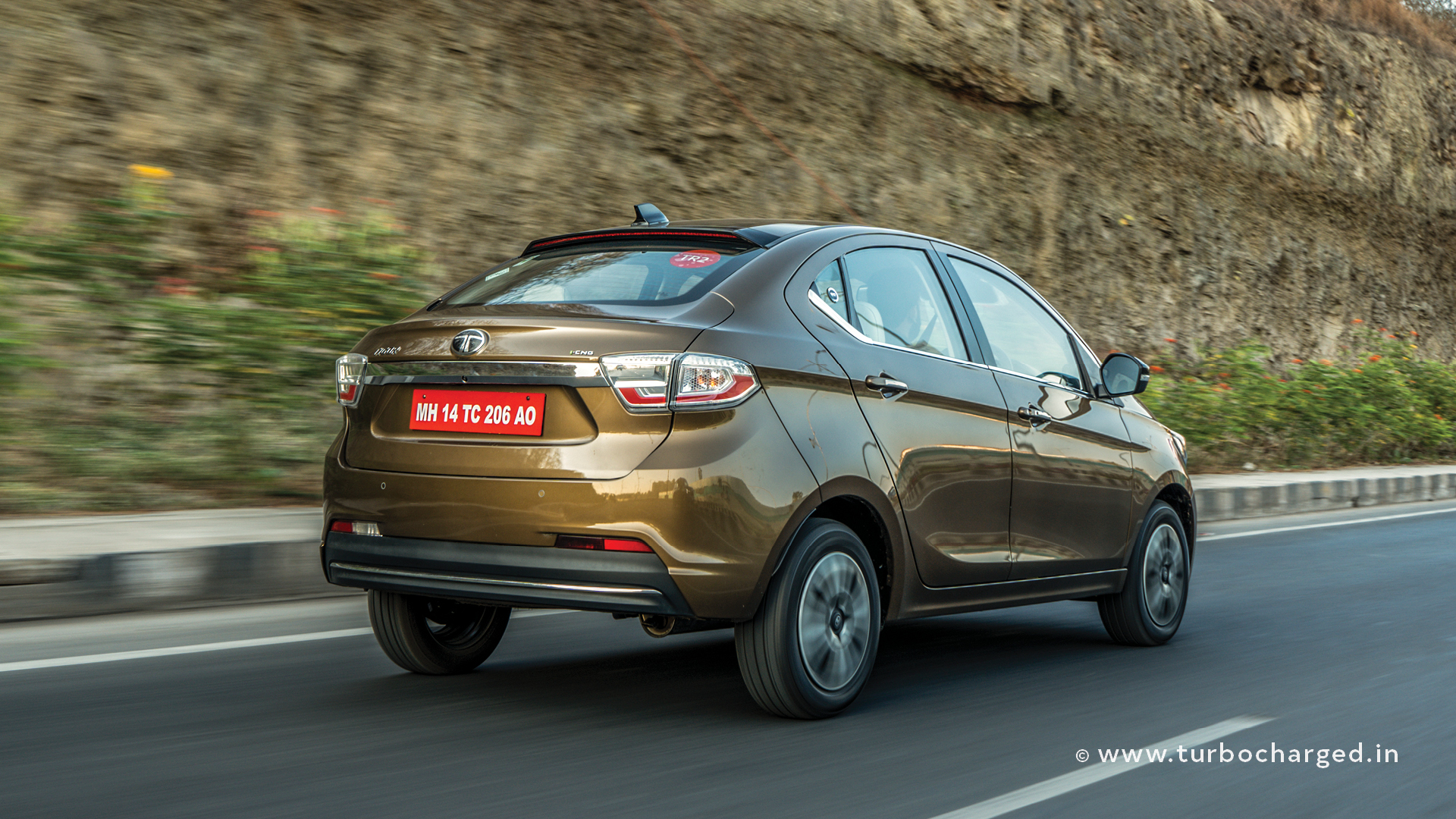
The Tata Tigor iCNG AMT is priced at Rs 8.85 lakh for the XZA variant, while the XZA+ variant is priced at Rs 9.55 lakh ex-showroom, a Rs 60,000 premium over the manual CNG variant. While the pricing is slightly on the higher end, considering the additional convenience factor provided by the AMT gearbox and the fact that the Tigor iCNG AMT is the only car in its segment, it presents a more compelling option for buyers looking for a CNG car with an automatic transmission. Offering more options is always beneficial for consumers, ultimately ensuring a better experience.





